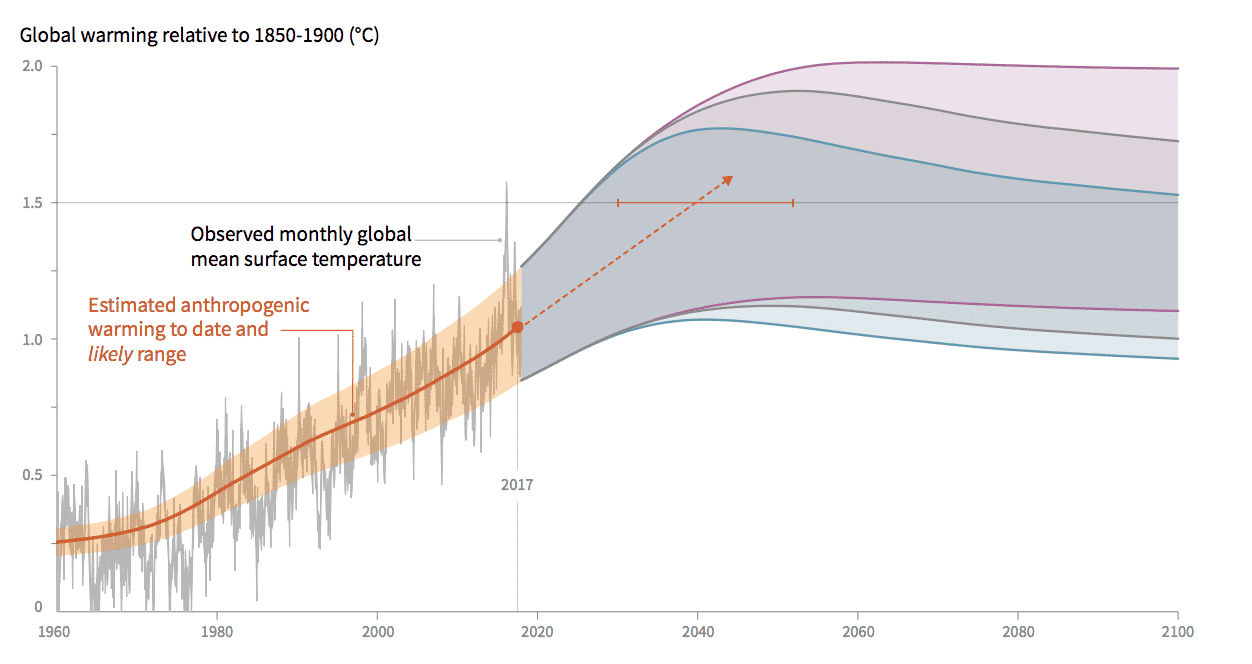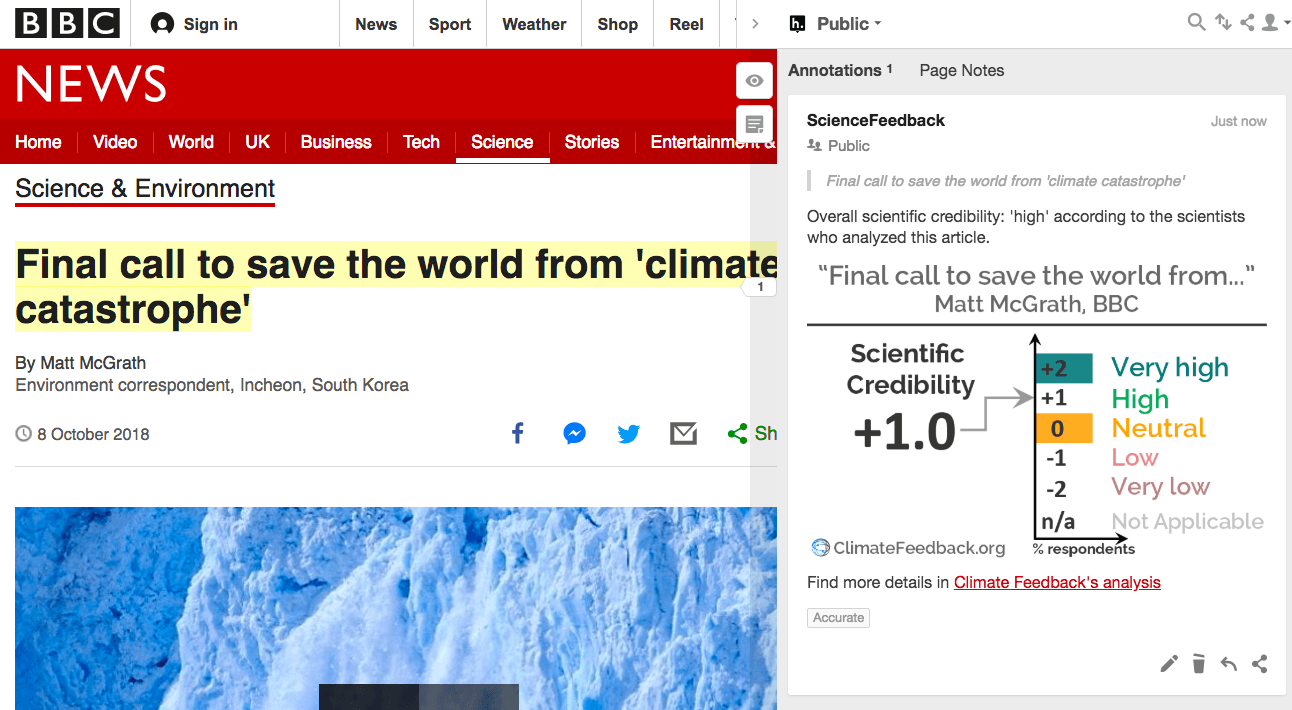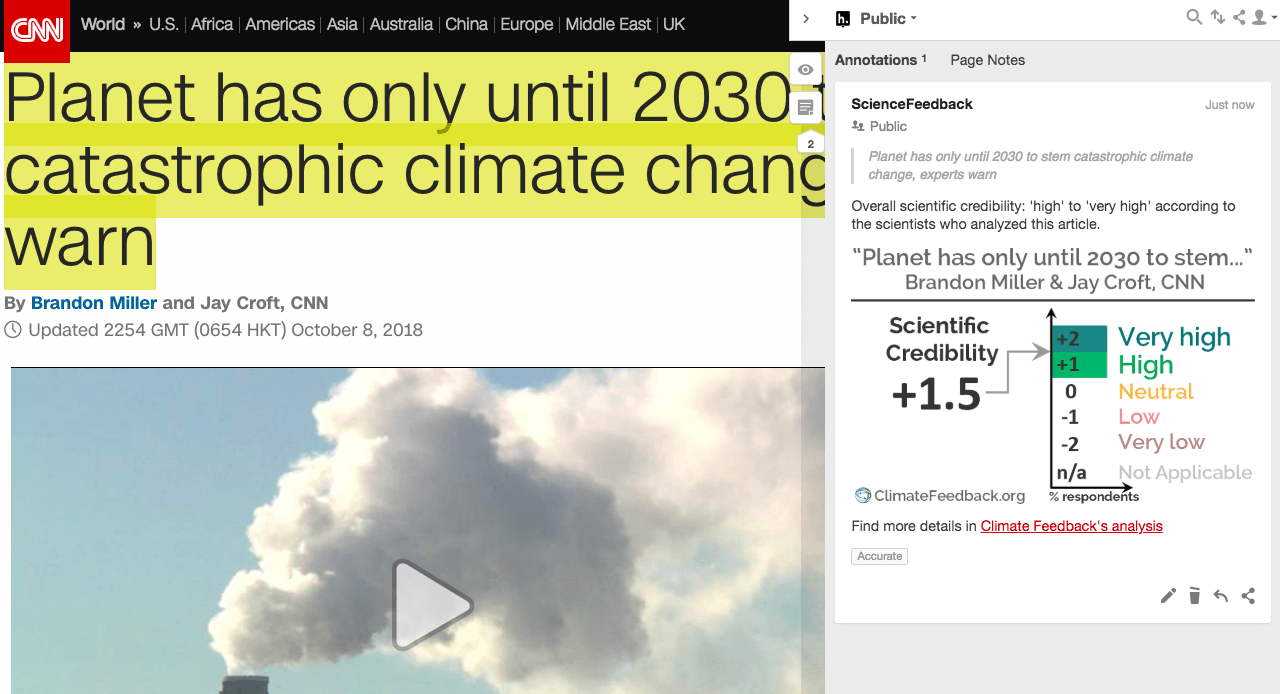- Climate
New York Times' coverage of IPCC report clearly presents conclusions
Reviewed content
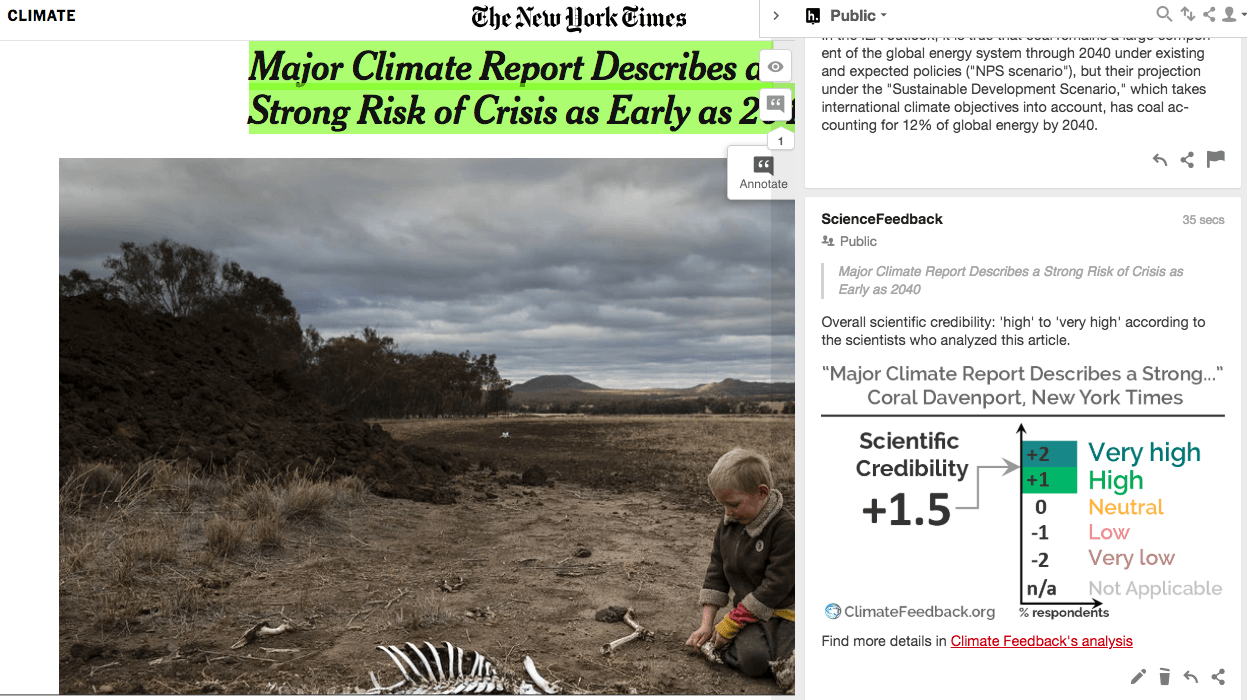
Headline: "Major Climate Report Describes a Strong Risk of Crisis as Early as 2040"
Published in The New York Times, by Coral Davenport, on 2018-10-07.
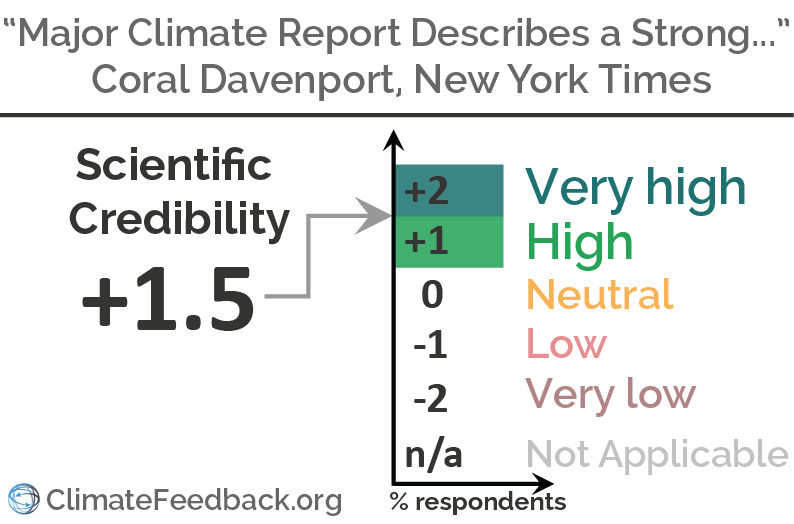
Scientists’ Feedback
SUMMARY
This story in The New York Times covered the October release of the IPCC’s “Global Warming of 1.5 °C” report. The report, which was requested by governments during the 2015 Paris Agreement negotiations, details the impacts of 1.5 °C compared to 2 °C and the emissions cuts required to limit warming to either of those levels.
Scientists who reviewed the story found that it provided an accurate and detailed summary of the report, though some statements about warming being “worse than previously thought” could have used some clarifying context.
This is part of a series of reviews of 2018’s most popular climate stories on social media.
See all the scientists’ annotations in context. You can also install the Hypothesis browser extension to read the scientists’ annotations in context.
REVIEWERS’ OVERALL FEEDBACK
These comments are the overall assessment of scientists on the article, they are substantiated by their knowledge in the field and by the content of the analysis in the annotations on the article.

Research fellow, University of Melbourne
The article accurately summarises the IPCC special report on 1.5 °C of global warming. The article represents the key findings of the report and does well at highlighting the impacts of 1.5 °C global warming and discussing the difficulty in limiting warming to this level.

Research Scientist, Lawrence Livermore National Laboratory
This article was based on a UN Report regarding the impacts of climate change for 1.5 degrees C of warming. This was a very comprehensive article, demonstrating the broad range of risks that climate change poses, the scale of the action needed to mitigate climate impacts, as well as the roadblocks to action on climate change. In general, the article did a good job surveying aspects of a large UN report. The article was overwhelmingly based on the science and evidence from the underlying UN report, but would have benefited from additional context for statements that claimed that climate impacts are more dire, are happening more rapidly, or with less global mean warming than previously thought.
Notes:
[1] See the rating guidelines used for article evaluations.
[2] Each evaluation is independent. Scientists’ comments are all published at the same time.
Annotations
The statements quoted below are from the article; comments are from the reviewers (and are lightly edited for clarity).
paints a far more dire picture of the immediate consequences of climate change than previously thought

Research Scientist, Lawrence Livermore National Laboratory
This statement and similar statements would benefit from specific examples from the report or more context. Although I agree the problem is dire, I’m not sure which aspect of the problem is worse than previously thought. For example, the carbon budget (i.e., how much humans can emit and still warm less than 1.5 degrees C) has expanded from previous estimates.
It may be that some impacts will be felt earlier or will be worse than previously estimated—this just wasn’t clearly articulated.
Other statements that I thought could have used greater context or examples from the report include the quote by Bill Hare (below), or the statement that “the new report, however, shows that many of those effects will come much sooner, at the 2.7-degree mark.”
avoiding the damage requires transforming the world economy at a speed and scale that has “no documented historic precedent.”

Research Scientist, Lawrence Livermore National Laboratory
This is a useful point and comes from The Summary for Policymakers (C2.1) and is with regard to the economic transition needed to limit the world to 1.5 degrees C of warming (with limited or no “overshoot.”)
The report does state that some sectors and technologies have transformed this quickly, but not on the same scale.
describes a world of worsening food shortages and wildfires, and a mass die-off of coral reefs as soon as 2040

Research Scientist, Lawrence Livermore National Laboratory
I thought these were good examples of impacts.
I couldn’t find where this exact statement came from, but it seems reasonable given that (to quote the report) “[…] achieving emissions reduction targets consistent with the ambitious goal of 1.5°C of global warming under the Paris Agreement will result in the further loss of 70–90% of reef-building corals compared to today[…]” and that “Global warming is likely to reach 1.5°C between 2030 and 2052 if it continues to increase at the current rate.”
And, regarding food security, “Increasing global temperature poses large risks to food security globally and regionally, especially in low-latitude areas (medium confidence) […], with warming of 2°C projected to result in a greater reduction in global crop yields and global nutrition than warming of 1.5°C (high confidence) […], owing to the combined effects of changes in temperature, precipitation and extreme weather events, as well as increasing CO2 concentrations.”
But the heads of small island nations, fearful of rising sea levels, had also asked scientists to examine the effects of 2.7 degrees of warming.

Research Scientist, Lawrence Livermore National Laboratory
The UN Report frequently demonstrated that the impacts of climate change (around the world, not just for island nations) are less severe and widespread at 2.7 degrees Fahrenheit compared to 3.6 degrees Fahrenheit.
This would have been a useful and easy point to make, given that it was one of the central findings of this report.
International Energy Agency, a global analysis organization, “continue to see a role for coal for the foreseeable future.”

Research Scientist, Lawrence Livermore National Laboratory
This statement deserves more scrutiny because it appears that the IEA outlook and the UN Report are considering different scenarios.
In the IEA outlook, it is true that coal remains a large component of the global energy system through 2040 under existing and expected policies (“NPS scenario”), but their projection under the “Sustainable Development Scenario,” which takes international climate objectives into account, has coal accounting for 12% of global energy by 2040.

